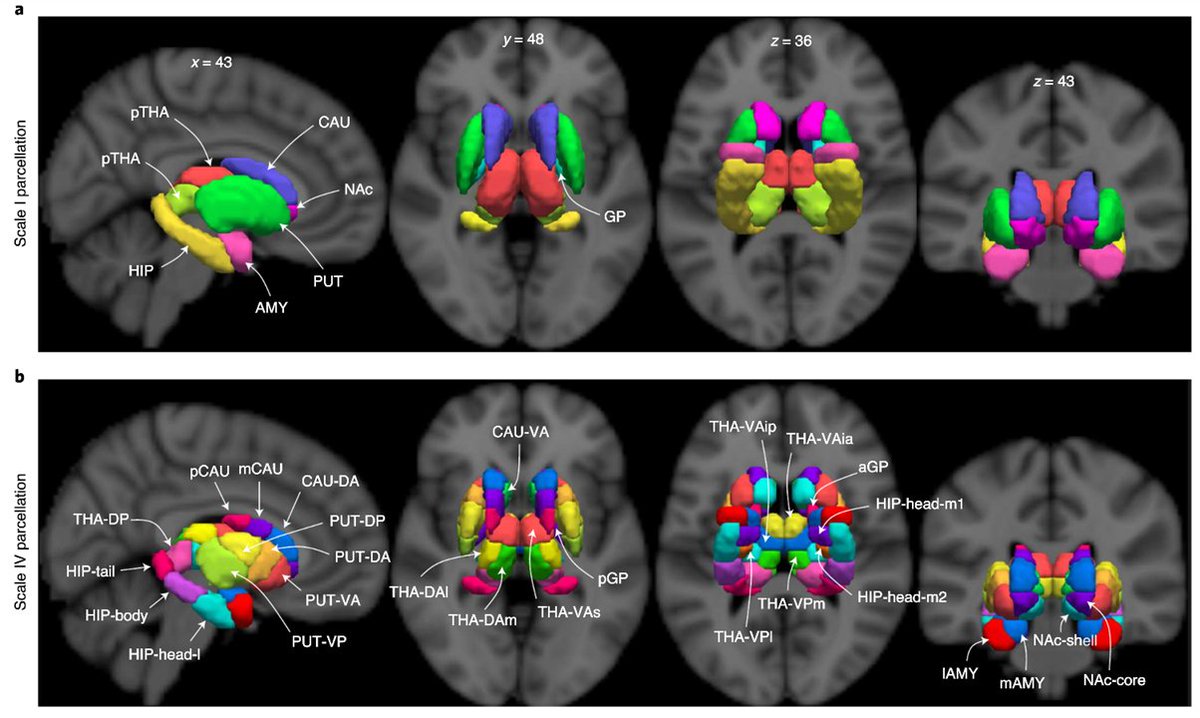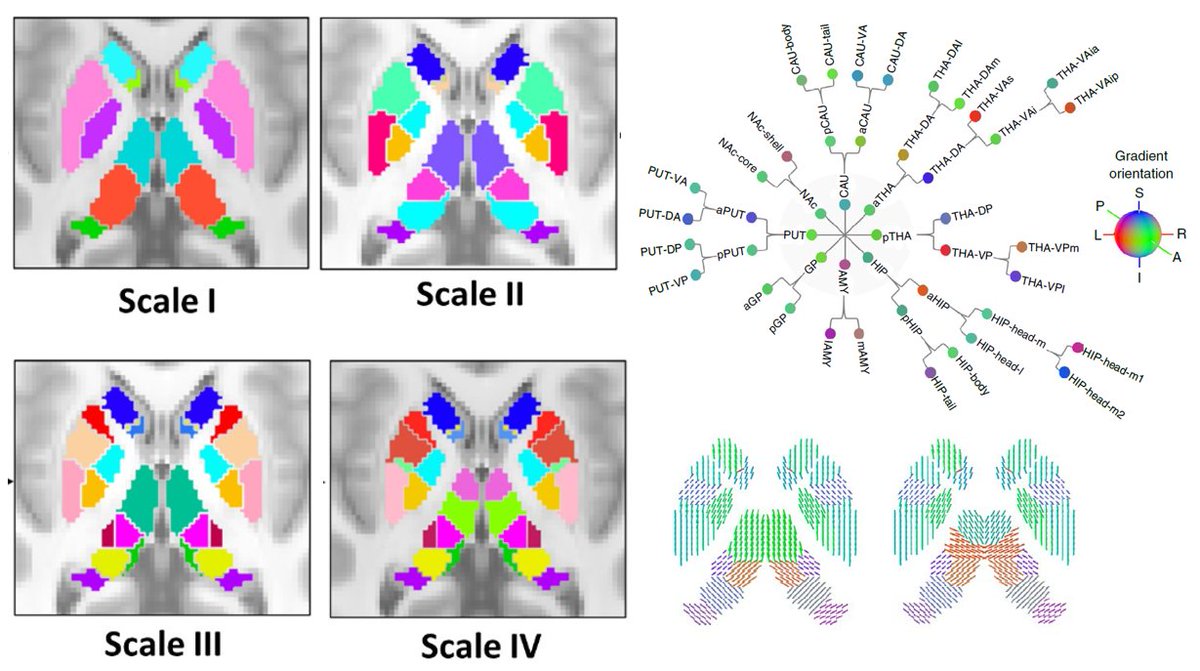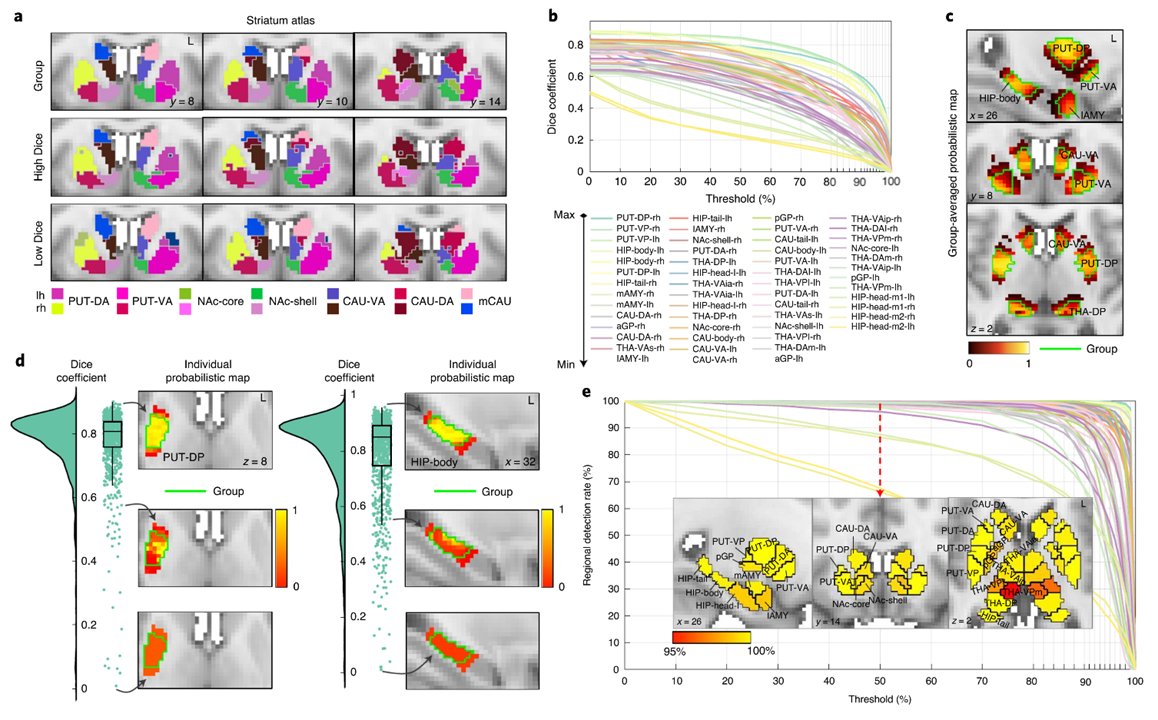1/6: Excited to share final version of our new hierarchical SUBCORTEX ATLAS in @NatureNeuro
27 new functional regions organize across 4 scales and adapt to changing cognitive demands
Full text access: https://rdcu.be/b7N8K
Well">https://rdcu.be/b7N8K&quo... done @yetianmed
@DrBreaky @DanielMargulies
27 new functional regions organize across 4 scales and adapt to changing cognitive demands
Full text access: https://rdcu.be/b7N8K
Well">https://rdcu.be/b7N8K&quo... done @yetianmed
@DrBreaky @DanielMargulies
2/6: Scales I-IV of our atlas are freely available in CIFTI & NIFTI formats.
We have also integrated our atlas into existing cortex-only atlases (e.g. Gordon, Glasser) to enable whole-brain connectome mapping:
https://github.com/yetianmed/subcortex">https://github.com/yetianmed...
We have also integrated our atlas into existing cortex-only atlases (e.g. Gordon, Glasser) to enable whole-brain connectome mapping:
https://github.com/yetianmed/subcortex">https://github.com/yetianmed...
3/6: We used model selection to reconcile two complementary models of brain topography: continuous GRADIENTS and discrete BOUNDARIES.
Boundaries are only drawn if local gradients are sharper than expected under a null model (gray curves in the image).
Boundaries are only drawn if local gradients are sharper than expected under a null model (gray curves in the image).
4/6: Using machine learning techniques, we personalized the group-consensus atlas to account for individual differences in connectivity. All regions were detected in unseen individuals.
5/6: Connectivity gradients varied dynamically in response to changing cognitive demands. For example, the anterior hippocampus became more integrated with the amygdala during task engagement, compared to rest.
6/6: Check out the video by @yetianmed : https://www.youtube.com/watch?v=iwoVIkNco0s&t=4s
Thanks">https://www.youtube.com/watch... to @gordonneuro for the fantastic commentary: https://www.nature.com/articles/s41593-020-00721-4
Check">https://www.nature.com/articles/... out the Pursuit article: https://pursuit.unimelb.edu.au/articles/mapping-the-terra-incognita-of-our-brains
Feature">https://pursuit.unimelb.edu.au/articles/... in Chinese:
https://mp.weixin.qq.com/s/_0nrHilSllyJbMFdvNttfA
Thanks">https://mp.weixin.qq.com/s/_0nrHil... to our Reviewers & Editor!
Thanks">https://www.youtube.com/watch... to @gordonneuro for the fantastic commentary: https://www.nature.com/articles/s41593-020-00721-4
Check">https://www.nature.com/articles/... out the Pursuit article: https://pursuit.unimelb.edu.au/articles/mapping-the-terra-incognita-of-our-brains
Feature">https://pursuit.unimelb.edu.au/articles/... in Chinese:
https://mp.weixin.qq.com/s/_0nrHilSllyJbMFdvNttfA
Thanks">https://mp.weixin.qq.com/s/_0nrHil... to our Reviewers & Editor!

 Read on Twitter
Read on Twitter






